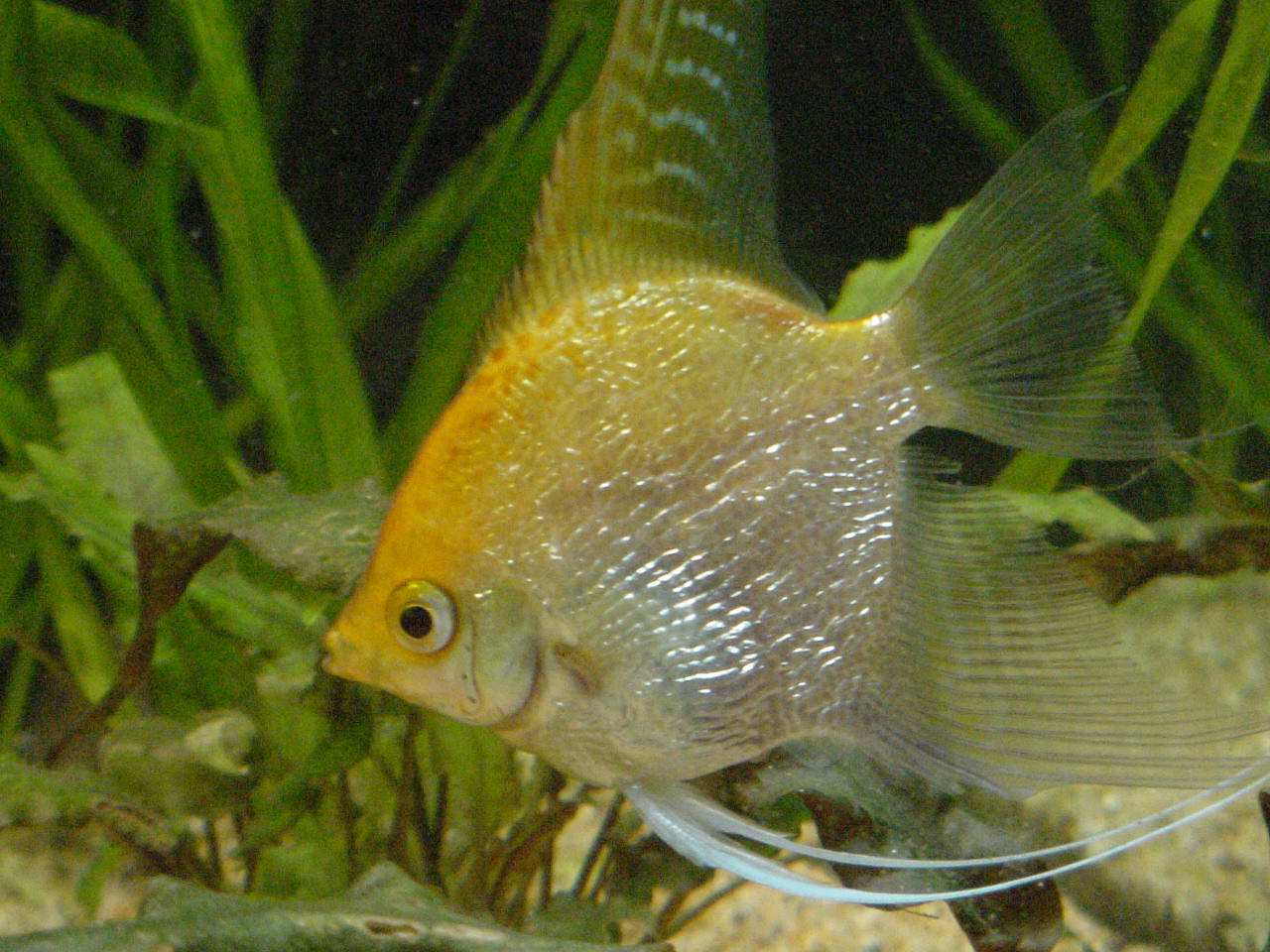
The Lovely Angelfish

There are many varieties of angelfish, as well as a large variety of colors. Angel Fish tend to be a little weak when they are small, but as they get bigger they quickly improve their strength and are typically great aquarium fish that are even easy to breed. Angel Fish prefer to live in large aquariums that contain a minimum of 29 gallons of water. The gravel should be a maximum thickness of 1/4 of an inch, and the temperature of the water should be kept between 78 and 82 degrees Fahrenheit by using an aquarium heater. Ideally, Angel Fish enjoy water depth of 24” deep.
Feeding Angel Fish is as easy as going to the pet store. You can pick up the basic floating flake food, or freeze dried bloodworms (mosquito larvae). If you want to treat your angels, you can give them live black worms or brine shrimp occasionally- as long as you are careful to only feed them worms in good condition.
Angel Fish are part of the Cichlid family of fish, and just like other family members, if you only have two or three angels in a tank together, the strongest one will attack and make the others unhappy. Angels do better if there are groups of six or more in a large aquarium (50 gallons of water or more, with a minimum of 18” depth) or with just a single Angel Fish.
There are many tropical fish that can live in the same tank with angels. Silver Dollars and large Tetras, (avoid putting neon Tetra’s in a tank with Angel Fish as they are too small and will become lunch), Swordtails, Platies and Mollies- although do not put Guppies with Angel Fish as they will get eaten! You can also include Bala Sharks, Gouramis, Rainbows, Clown Loaches and Giant Danios in fish tanks along side Angel Fish.
Angel Fish are quite susceptible to the “Hole in the Head” disease. The disease starts out as small sores around the eyes and on the head of the fish, and soon will take over the entire outer layer of the fish’s head.
The typical aquarium life of an Angel Fish is about ten years, although with outstanding care they may live longer. They grow to an average of 12” tall.